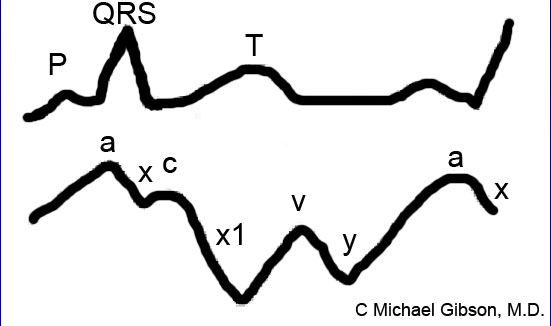A wave
Editor-In-Chief: C. Michael Gibson, M.S., M.D. [1]
Overview
The a wave is an upward deflection in the right atrial pressure that occurs during right atrial contraction.
See the main page on JVP waveforms for more details.
Shown below is an image depicting the typical a wave pattern as seen on an EKG.

Abnormalities in the JVP Waveforms
| Absence of a wave | Atrial fibrillation |
| Flutter of a wave | Atrial flutter |
| Prominent a waves | First-degree atrioventricular block |
| Large a waves | Tricuspid stenosis, Right atrial myxoma, Pulmonary hypertension, Pulmonic stenosis |
| Absent x descent | Tricuspid regurgitation |
| Prominent x descent | Conditions associated with large a waves |
| Slow y descent | Tricuspid stenosis, Right atrial myxoma |
| Rapid y descent | Constrictive pericarditis, severe Right heart failure, Tricuspid regurgitation, Atrial septal defect |
| Absent y descent | Cardiac tamponade |